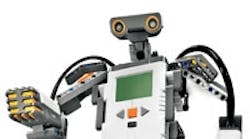Welcome to the Age of the consumer. Businesses have finally, perhaps reluctantly, come to the conclusion that nobody is better qualified to weigh in on the new products they want and need than the consumers themselves. Today, many companies -- likely even most -- employ focus groups, customer-feedback surveys and similar measures to assure the success of their product development efforts.
But Internet technologies, online social networks and a growing emphasis on open innovation, which promotes using both internal and external resources for inspiration, are encouraging a more customer-driven innovation process -- one where customers help drive the product development process rather than simply react to company-driven ideas.
For example, Procter & Gamble Co. has launched Capessa.yahoo.com, a Web site for women, which it describes as an online community "where women can share inspirational stories, as well as practical tips and information." The Cincinnati-based consumer goods manufacturer expects to reap benefits as well, such as gaining a better understanding of women's product needs.
Toymaker LEGO Group, on the other hand, went straight to its customers -- namely robot enthusiasts -- several years ago to help guide product development improvements to its Mindstorms product, creating a users' panel and challenging them to improve the company's robotics kit. Nestle, L'Oreal and Nokia are among other companies that have invited customers into the product development driver's seat.
Also important is the idea of continuously listening to the customer, rather than hearing from them only at certain moments in time. Internet technologies help advance the idea of continuously listening to customers, Overby says, allowing companies to monitor blogs, online communities and use other resources to learn of customers' latent, or unspoken, needs.
Yet building a customer-driven model of innovation is easier said than done. "People love to tell you what they think, but there's also a lot of noise," Overby says.
Patricia Seybold, author of Outside Innovation: How Your Customers Will Co-Design Your Company's Future (Collins, 2006), has more than 30 years of experience in customer-led business strategy. Seybold, CEO of Boston-based consulting firm Patricia Seybold Group, offers this five-step customer innovation blueprint:
- Engage lead customers and commercialize their inventories. Lead customers, she explains, are the small percentage of current customers who are truly innovative.
- Nurture customer communities.
- Help customers strut their stuff. In short, find ways to acknowledge their contributions.
- Provide innovation toolkits to help customers achieve their outcomes. Such tools, which may include electronic design tools and co-design methodologies, help empower customers to design their own solutions.
- Promote open access and peer production.
See Also



